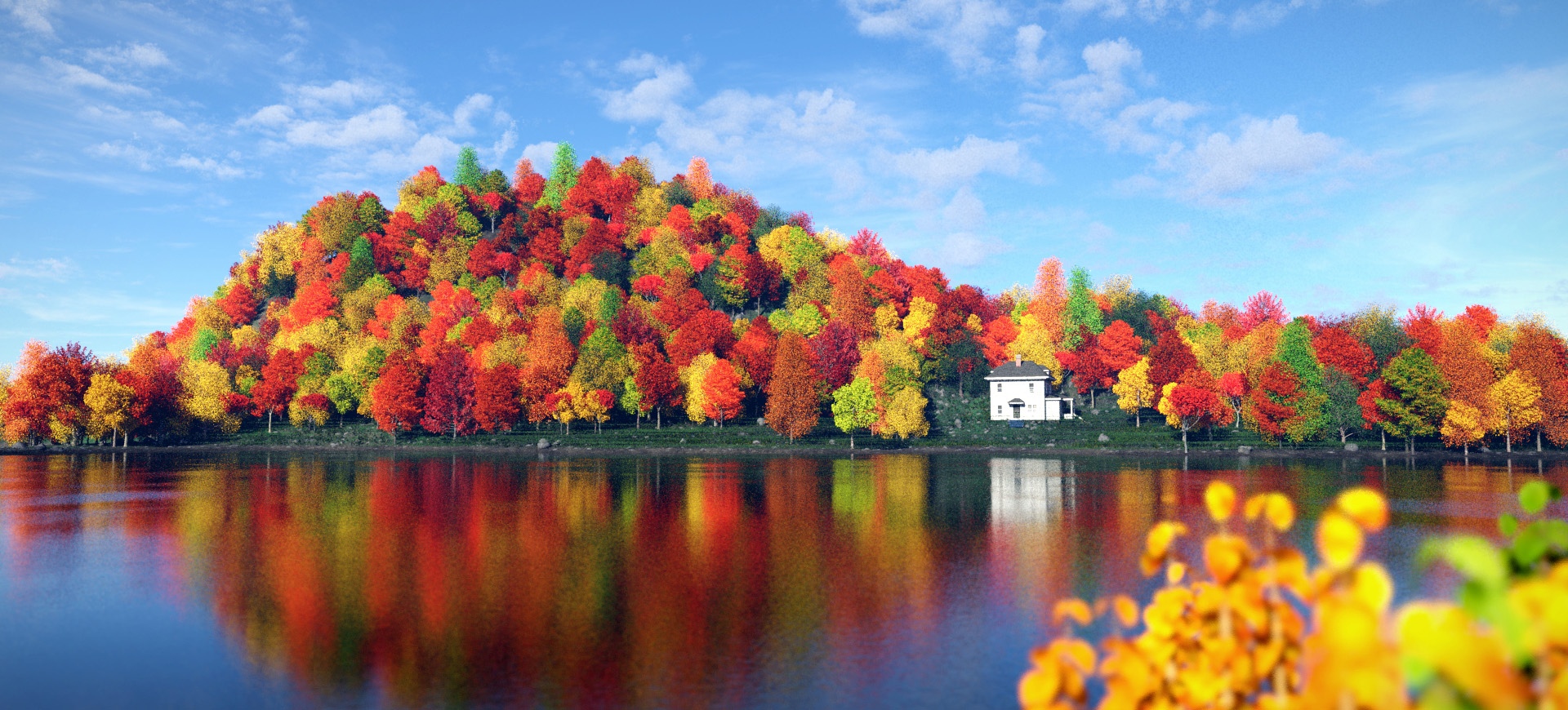Timelapse animation of a Terragen project created during the elective course on Advanced Modeling at THM. The idea for the project was to render a short animation of an indian summer scene with its typical colorful trees in autumn of North America. The final video has a length of 8 seconds (192 frames at 24 fps).
The scene shows a house at the shore of a lake. The white building is situated in a clearing of a wooded hillside stretching out from the lake.
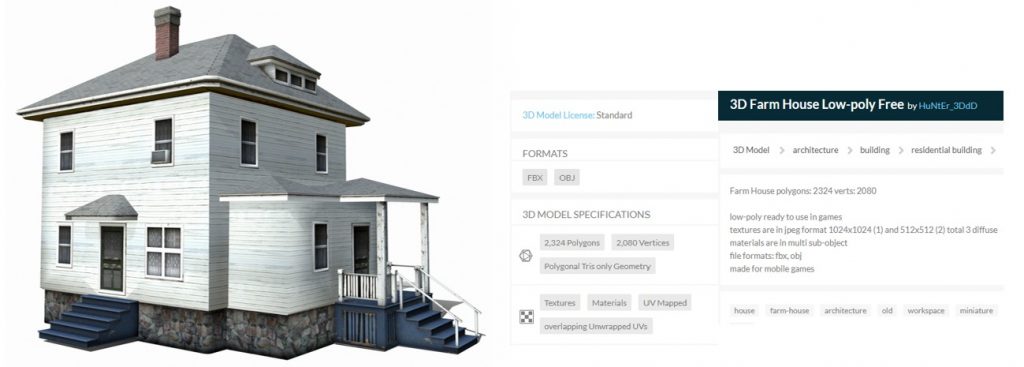
A suitable and free fbx model of the house could be found at Turbosquid. The model consists of three textured shaders only. Secondary textures such as normal maps and reflection maps were created using Shader Map 4.
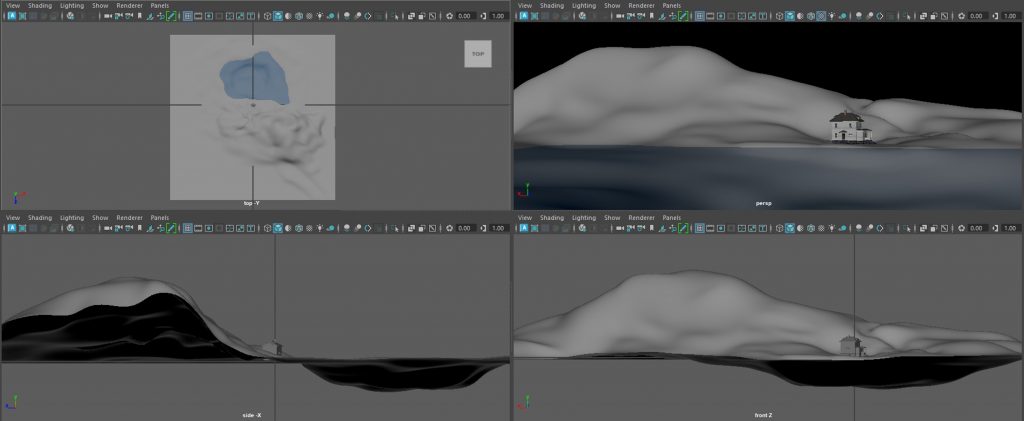
The terrain was modeled with Autodesk Maya’s sculpting tool using a polgonal plane with 50*50 subdivisions and afterwards exported as obj file, which is used in Terragen only to check and compare the height of the hill.

In terragen the terrain is not generated by importing the obj but by using a Heightfield Load node. This texture is exported from Maya as exr texture. Therefore, the depth AOV (Z) in Arnold was created and rendered for the orthographic top camera.

The figure above shows the comparison of the terrain in Terragen using the obj import (left) and the heightfiled based terrain generation (right).

Overall, 9 different Xfrog tree models were scattered on the hills surface. In addition, some of the leaf textures were recolored in Photoshop.

The trees should cover the entire ridge of the hill. The region in front of the house is obviously excluded, because anyone who builds a house by the lake, wants a clear view and direct access to the water. I used a Terragen Paint Shader (lake and house region are painted) as a distribution shader for all tree populations.
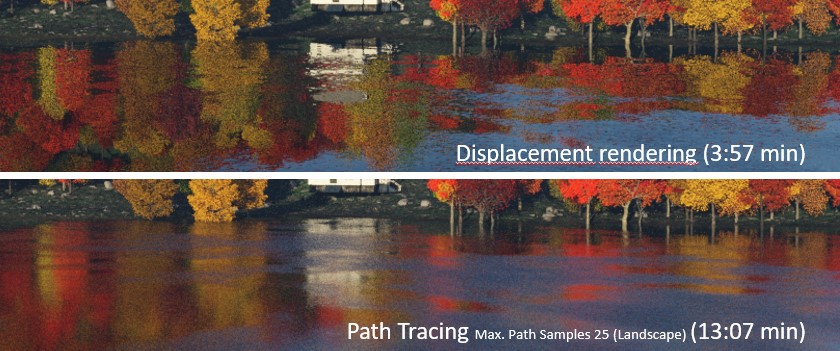
Using Terragen’s Path Tracing renderer takes much more rendering time than the standard micropoly dispalcement rendering. Nevertheless, the much blurrier wind patches are worth the longer render times.
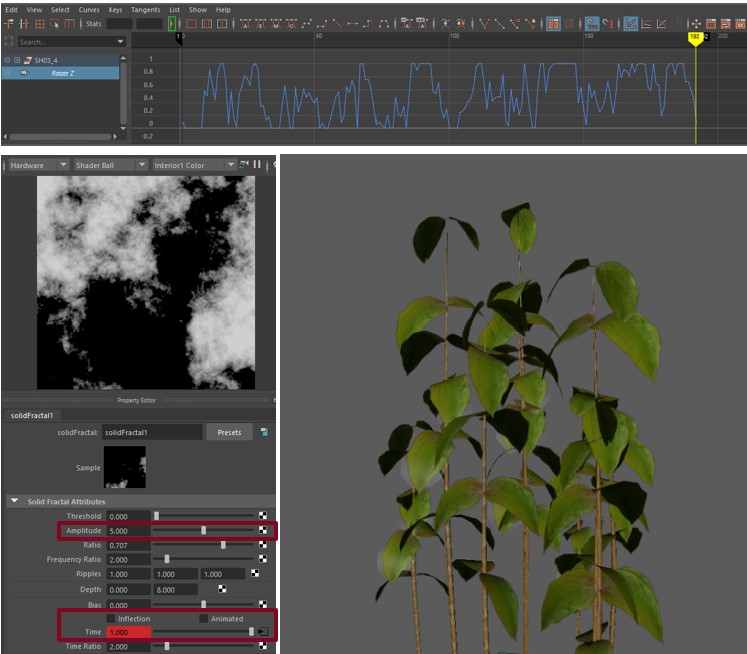
Some shrubs directly in front of the camera frame the scene visually. The fidgeting, which is typical for timelapse recordings is realized in Maya by using a simple Noise node . The keyframes were afterwards imported into Terragen.
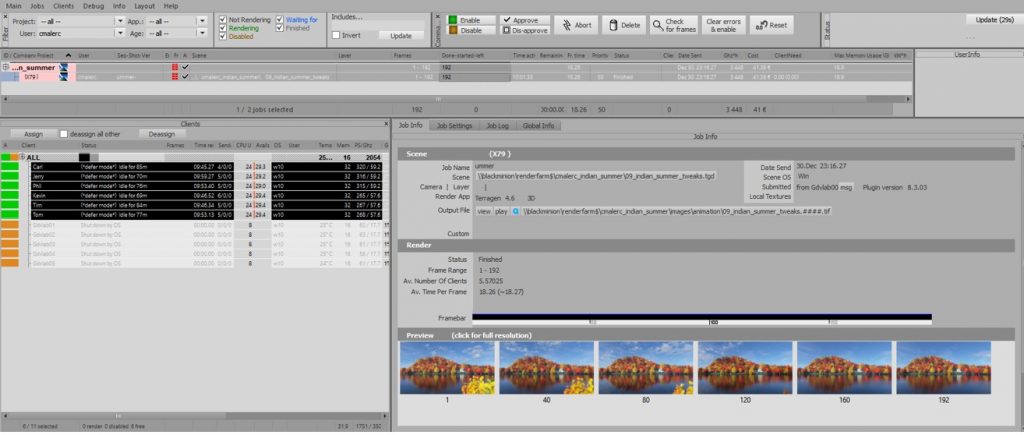
Rendering was done on our laboratory renderfarm running Royal Render using six CADnetwork Rendercubes. Including activated Depth of Field for the camera the average time for one frame on a single cube was approximately 20 minutes.
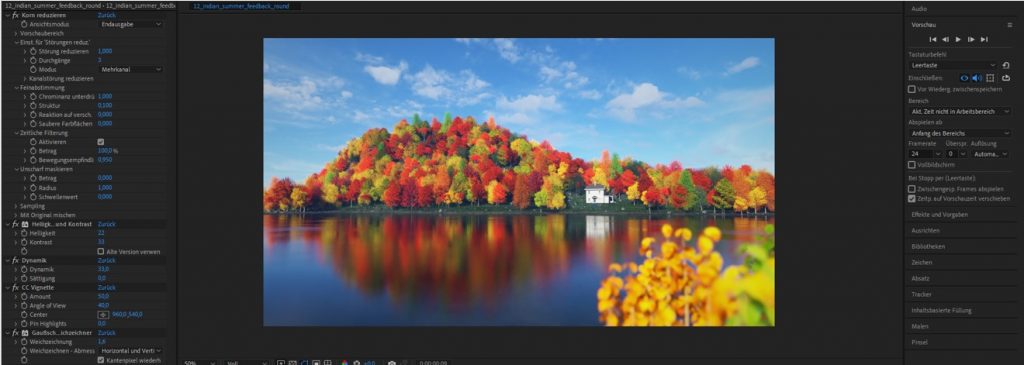
Finally, post production was done entirely in Adobe After Effects applying some simple color grading and contrast enhancement. In addition, leftover flickering was reduced by a noise reduction filter.

